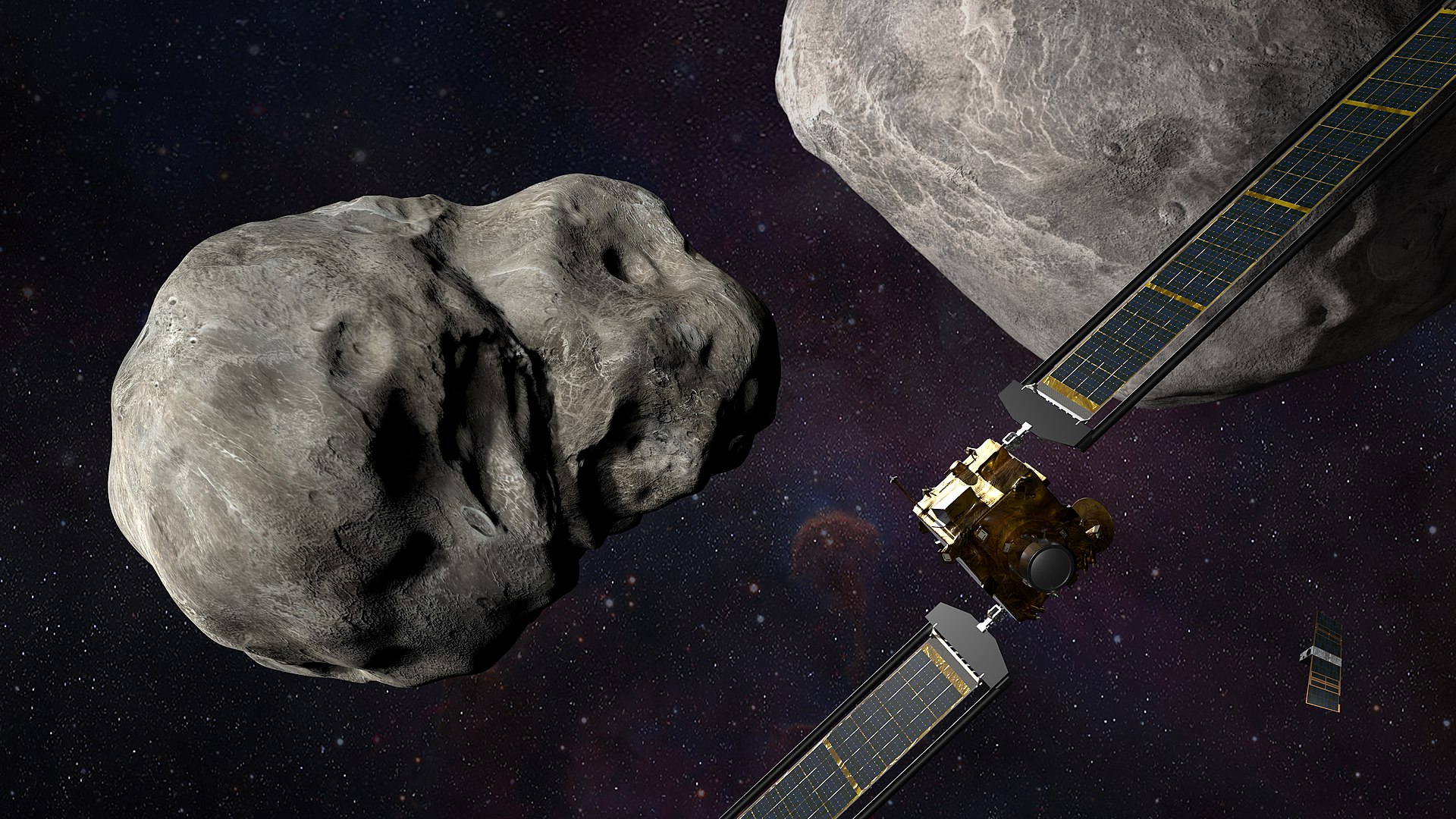NASA's planetary defense mission will test asteroid deflection, but how realistic is it?
It's pretty close to what we would do if an asteroid threatened, but there are some key differences.

On Sept. 26, NASA will crash a spacecraft into an asteroid to disrupt its path. The space rock isn't predicted to collide with Earth, nor is any other known asteroid or large object. The impact is a test — the crux of NASA's Double Asteroid Redirection Test (DART) mission. Though there is no true impending collision, the DART mission closely mimics what NASA scientists would do if an asteroid were headed toward Earth. The mission will also give scientists valuable data that will better prepare them to redirect a large asteroid or comet if one were to head toward us.
"It is exactly the kind of mission that we would use to actually deflect an asteroid," Seth Jacobson, an assistant professor of planetary sciences at Michigan State University and a co-investigator on the mission, told Space.com.
The DART mission is specifically testing a method called the kinetic deflector technique — basically, crashing a spacecraft into an asteroid to try to deflect or redirect its path away from Earth. Its target is the moonlet Dimorphos, which orbits the larger asteroid Didymos. With a diameter of 525 feet (160 meters), Dimorphos is exactly the size of an asteroid that scientists really would try to redirect with a kinetic impactor, Jacobson said, since the asteroid would be large enough that simple evacuation measures wouldn't be practical, but small enough that a moving object alone might be able to deflect it. The strategy would be especially useful, he said, if we had found out about the impact less than a few decades before it would happen.
Related: NASA's DART asteroid-impact mission will be a key test of planetary defense
Though an object the size of Dimorphos would cause major damage if it were to hit Earth, it likely wouldn't be a danger to the entire planet. For comparison, the asteroid Chicxulub, which triggered the extinction of the nonavian dinosaurs, was about 6 miles (10 km) in diameter. To deflect anything close to that size, we'd need a nuclear bomb or another powerful explosive attached to the kinetic impactor, Jacobson said. We'd also need a lot of time, ideally many decades, to develop such a missile, he said. But even with such a large object, the basic idea is the same as the one behind DART: transferring momentum to the object by crashing something into it and redirecting it.
"We really need to understand this technique first, before you could imagine adding an explosive component," Jacobson said.
The mission also demonstrates the high level of international collaboration needed to plan and execute a kinetic impact with a near-Earth object. Though the mission is led by NASA and the Johns Hopkins University Applied Physics Laboratory, scientists and engineers from all over the world are contributing to DART — for example, by calculating Dimorphos' precise orbit around Didymos and measuring the mission's success.
Get the Space.com Newsletter
Breaking space news, the latest updates on rocket launches, skywatching events and more!
"We've worked really closely with our European colleagues and colleagues all over the world," Ellen Howell, a senior research scientist at the University of Arizona Lunar and Planetary Laboratory and a co-investigator for DART, told Space.com. Though DART is a test, a similar level of international cooperation would be essential in the case of a real impact, she said.
Of course, there are a few key differences between DART and a defense against a real asteroid impact. The biggest is that neither asteroid in the chosen system is predicted to hit Earth. Scientists chose the Didymos system because it is a so-called eclipsing binary when viewed from Earth — in other words, Dimorphos visibly passes in front of Didymos, dimming it. This dimming allows scientists to measure precisely how long it takes the smaller asteroid to orbit the larger one and to measure how much that time period changes once the DART spacecraft collides with Dimorphos. Scientists will use this information to learn how much momentum the spacecraft transfers to the asteroid, which is information that will be crucial if we ever really need to use this technique, Jacobson said.
In addition, a real target would most likely not be part of a binary system, Jacobson said, as only about one in six near-Earth asteroids are binaries. Plus, the risk of any object this size or larger impacting Earth in the near future is extremely small. NASA says there’s nothing to worry about for at least the next century.
Nonetheless, NASA's Planetary Defense Coordination Office takes the risk of near-Earth-object impact very seriously — the same way many people study and try to mitigate the effects of earthquakes, tsunamis and volcanic eruptions, Jacobson said.
"These are all things that are natural hazards," he said. "While you can never completely get rid of the possibility of them happening, you can definitely mitigate their impact and try and avoid the worst-case scenario."
Editor's note: This story has been updated to better describe binary asteroids. Follow us on Twitter @Spacedotcom and on Facebook.
Join our Space Forums to keep talking space on the latest missions, night sky and more! And if you have a news tip, correction or comment, let us know at: community@space.com.

Rebecca Sohn is a freelance science writer. She writes about a variety of science, health and environmental topics, and is particularly interested in how science impacts people's lives. She has been an intern at CalMatters and STAT, as well as a science fellow at Mashable. Rebecca, a native of the Boston area, studied English literature and minored in music at Skidmore College in Upstate New York and later studied science journalism at New York University.









